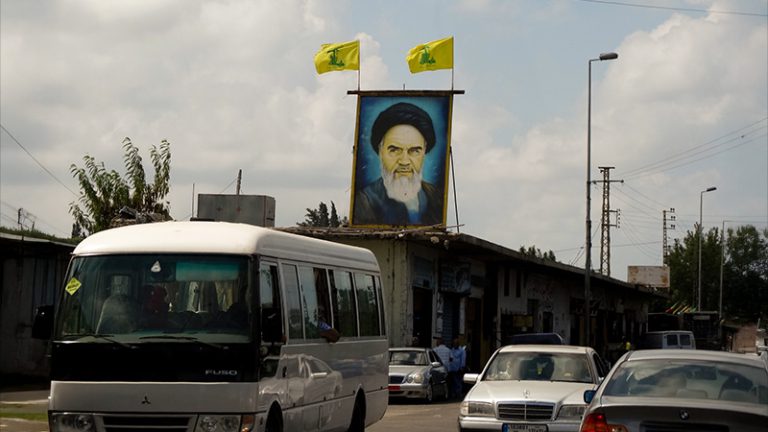
As Lebanon marks 50 years since the start of its devastating civil war of 1975-1990, it finds itself at another inflection point. Israel occupies parts of southern Lebanon while the Mediterranean nation is rebuilding in the wake of massive and indiscriminate Israeli attacks. At the same time, the Lebanese state is adapting to new regional dynamics after Hezbollah’s diminished influence—with the loss of its leadership—by forming a new government.
The convergence of complex geopolitical disputes—from the Palestinian issue to competing foreign interests—with domestic political concerns today, bears similarities to the undercurrents of the civil war. However, the trauma of the war has not been forgotten, and the nation appears inclined toward maintaining the tense peace both domestically and from external forces.
War and Revolution
The Lebanese civil war was not only a watershed moment for Lebanon but, like other significant wars, it was also a critical juncture for reshaping the Middle East—and for many countries that intervened, from Israel and the United States to France and Syria. For Iran, which experienced its own tumult that culminated in the 1979 Revolution, the war in Lebanon offered both an ideological outlet and a strategic opportunity for the emerging Islamic Republic.
After Iranian revolutionaries from across the political spectrum toppled the western-oriented monarchy of Shah Mohammad Reza Pahlavi in 1979, Islamist elites took control of the state, harnessed the discourse of the revolutionaries, and established a theocracy grounded in Shia Islam and a fierce anti-imperialist ethos. Iran’s engagement with Lebanon after Israel’s invasion in 1982 illustrated the broader regional strategy of the revolutionary state—a blend of ideological solidarity with regional movements as part of its narrative of resistance and the pragmatic pursuit of its national interests.
Within the framework of revolution and anti-imperialism, the struggles for freedom in Palestine and Lebanon became symbols of resistance against the West and Israel. Iran saw in Lebanon not simply a conflict among sectarian and political factions, but a stage on which to support subjugated peoples confronting hegemonic forces, particularly Israel and the United States.
While general discussions on Iranian-Lebanese relations focuses on the Islamic Republic and Hezbollah, the ties between contemporary Iran and Lebanon have historical roots that date back several centuries. The Islamic Republic was able to tap into these historical ties, especially the bonds of Shia Islam and its powerful symbols of martyrdom and defiance in the face of tyranny, to promulgate its message of resistance in the broader context of the Lebanese civil war.
The Rise of Hezbollah
It was in the crucible of this conflict that Iran built one of its most enduring and consequential regional relationships: its alliance with Hezbollah. As Augustus Richard Norton describes in his 2007 study, the group, initially conceived as a loosely organized network of Shia militias forged by Iran’s revolutionary ideology, emerged from the turmoil of Israel’s invasion during the civil war as a disciplined, highly-effective force.
This was particularly true in southern Lebanon, with its large, downtrodden Shia population that had been historically neglected by the state and was under Israeli military occupation, which fueled Hezbollah’s rise. Israel’s invasion of Lebanon in 1982 created the conditions and the impetus for an armed resistance like Hezbollah, to emerge. Iran provided training, funding, weapons, and ideological support through the Islamic Revolutionary Guard Corps (IRGC), inserting its influence into the fabric of Lebanese resistance politics.
Hezbollah was not merely a proxy but a key ally in Iran’s regional project. Through Hezbollah, Iran found a way to project power without direct confrontation with its adversaries, using asymmetric warfare and grassroots mobilization to upend the traditional balance of power in the region. While revolutionary rhetoric animated its involvement, realpolitik was a dominant force in the Islamic Republic’s calculus.
On the one hand, Lebanon became a crucial site of confrontation against imperialism, namely the United States and Israel. This confrontation, coupled with Lebanon’s awakened Shia population, made it a perfect model for the Islamic Republic’s narrative of revolution and resistance. At the same time, Hezbollah became a formidable force to support Iran’s interest in military alliances, helping to strengthen its geopolitical position, although at the expense of the sovereignty of the Lebanese state.
Hezbollah’s transformation from a militia into a quasi-professional army with an active political wing after the end of the civil war further validated Iran’s strategy. Tehran had invested in a movement that not only survived Lebanon’s post-war reconstruction but became a major power in the nation’s political landscape. In doing so, Iran extended its influence in the region and strengthened its deterrence against adversaries.
Consequently, Lebanon—specifically under the influence of Hezbollah—became a symbol of Iran’s revolutionary ethos and a test of its foreign policy approach, which manifested over time in the development of Iran’s “Axis of Resistance.” Recent events, such as the weakening of Hezbollah in Lebanon and the fall of Bashar al-Assad in Syria, will have implications for Iran’s foreign policy and deterrent capabilities for years to come. Yet, the language of resistance, combined with the principles of realpolitik, are still essential to the Islamic Republic’s regional strategy.
Decades later, Iran’s involvement in the Lebanese civil war stands as a testament to the enduring impact of transnational ideologies and the careful deliberations of statecraft. For the Islamic Republic, Israel’s invasion amidst the civil war prompted a call to arms that Iran helped to answer in the form of Hezbollah. The war provided Iran’s post-revolutionary state with an opportunity to spread its idea of resistance against aggressive global powers—utilizing potent Shia symbols that resonated among Lebanon’s Shia community—while asserting its own regional authority. The legacies of that experience remain deeply embedded in the politics of both states, even as the region confronts new crises and shifting alignments.
The views expressed in this publication are the author’s own and do not necessarily reflect the position of Arab Center Washington DC, its staff, or its Board of Directors.
Featured image credit: Shutterstock/Ahmed K Janabi

